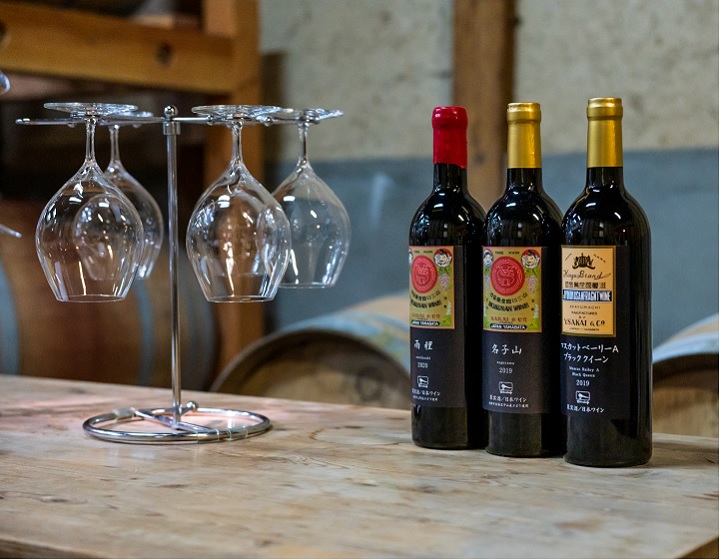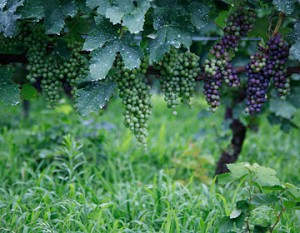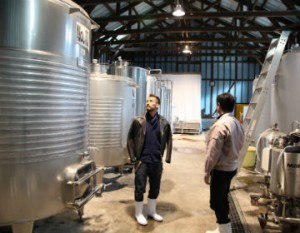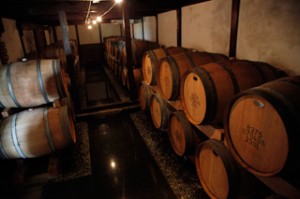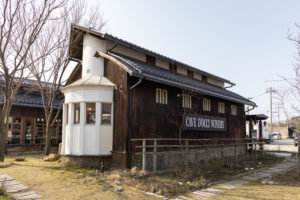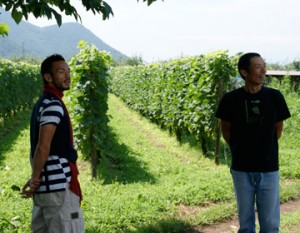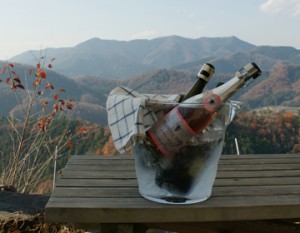Sakai Winery Ltd. has a history of over 100 years in wine production. Since the Meiji Era, when the company began cultivating vineyards and brewing wine in Akayu, Nanyo City, they have been making wine the old-fashioned way, using a non-filter method and the natural yeasts and microorganisms that exist in the area, while also making innovative efforts such as “mixed wine,” a blend of several different types of wine.
History of Sakai Winery
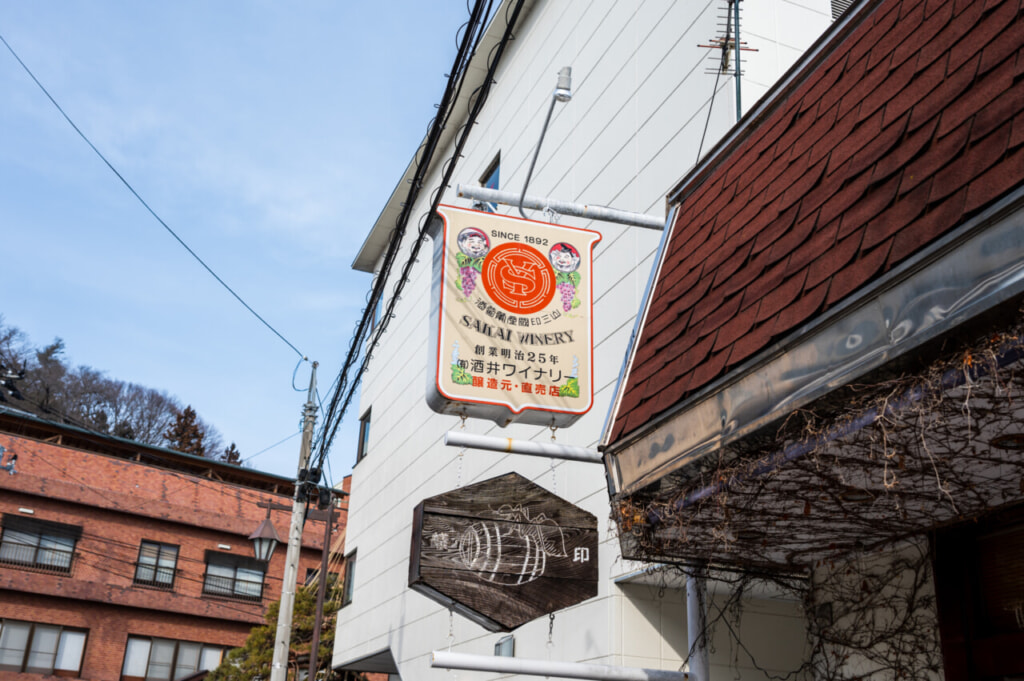
Nanyo City, located in the southeastern part of Yamagata Prefecture, has been cultivating grapes since the Edo period due to the temperature difference between day and night characteristic of the basin and the good drainage of the hilly terrain. Akayu is also famous as a hot spring resort with a history of more than 930 years. Since the late Heian period (794-1192) to the present, it has healed many visitors.
Nanyo City is also a wine-producing region with many small wineries. In fact, six of the 18 wineries in Yamagata Prefecture are located in Nanyo City, including Sakai Winery, which has both a brewery and a store.
It all started with the cultivation of vineyards.
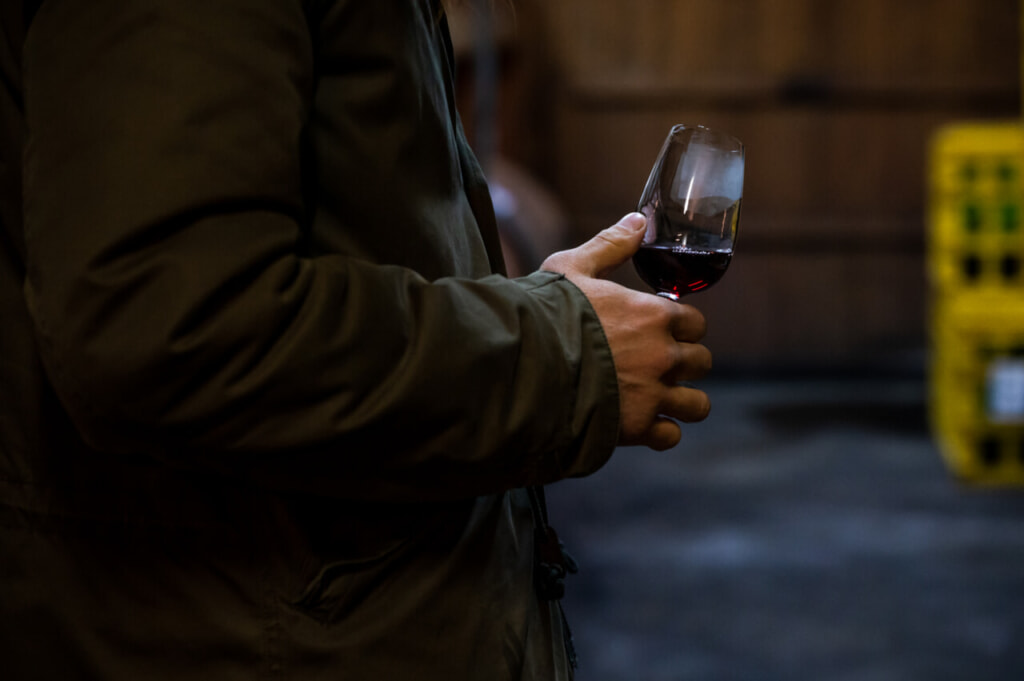
Sakai Winery, founded in 1892, is the oldest winery in Tohoku. It is a brewing company that has been run by the Sakai family for generations, but wine production began in 1887, before the company was founded. The first prefectural governor of Yamagata Prefecture promoted the cultivation of fruit trees, and Yaso Sakai, the 16th head of the Sakai family, began cultivating vineyards.
The Sakai family was also running a hot spring inn business when they started growing grapes, and while running the inn business, they spent five years growing grapes and started brewing wine in 1892. In the beginning, their products were mainly for tourists,
At first, the products were mainly for tourists, and sweet port wine was the only way to sell. After the war, sake became the preferred drink, and wine sales slowed down. However, during the time of Matahira Sakai, the fourth generation of the winery’s founder, wine finally came into the limelight, aided by the spread of Western-style cuisine and the so-called “Itameshi boom. In 2004, Ippei Sakai, the 20th head of the Sakai family and current head of Sakai Winery, completed a master’s degree in brewing at Tokyo University of Agriculture and returned to Yamagata to take his place.
In the past, 90% of sales were to individuals, but now individuals account for 30% and liquor stores and restaurants for 70%. In addition, recent trends show an increase in exports, with distribution in Southeast Asia, the U.S., Sweden, and other countries,” says Sakai. He feels that the wine industry is changing with the times.
Natural farming methods suited to the land
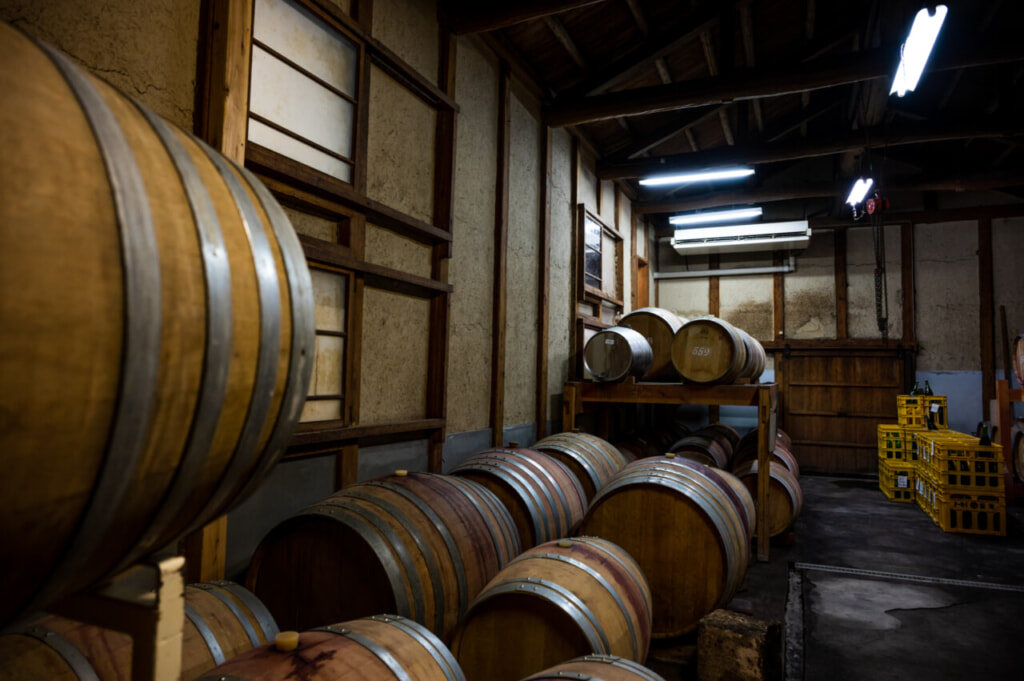
Sakai Winery now has about 15 of its own vineyards in the Akayu area. The nearest one is a five-minute drive from the winery. However, when Mr. Sakai made his U-turn in 2004, there was only one vineyard. It was on a slope so steep that it was difficult to stand on it, and it had been abandoned. Since other vineyards in Akayu have similar topography, it became difficult to maintain the vineyards due to the declining birthrate and aging population, and some land was abandoned in the same way.
Sakai Winery, which purchased such land and increased its own vineyards, now grows a wide variety of varieties. The lineup ranges from traditional varieties such as Koshu, Delaware, Merlot, Cabernet Sauvignon, Chardonnay, and Malbec to varieties developed in modern times. The reason for this is that we are incorporating a variety of grape varieties with the aim of producing grapes that can withstand climate change. This is because in recent years, the summer temperatures in Yamagata Prefecture have risen to the point of extreme heat, causing serious problems such as an earlier harvest time and, in some vineyards, the spread of grape diseases that sometimes make it impossible to harvest at all.
It is natural that vegetation changes as the climate changes. I want to produce wines that can be considered unique, while accepting climate change,” says Sakai.
One of Sakai Winery’s unique attempts is to recreate the way farmers did things 100 years ago using modern technology. One such example is the sheep in their vineyards.
A small ecosystem spreading in our own fields
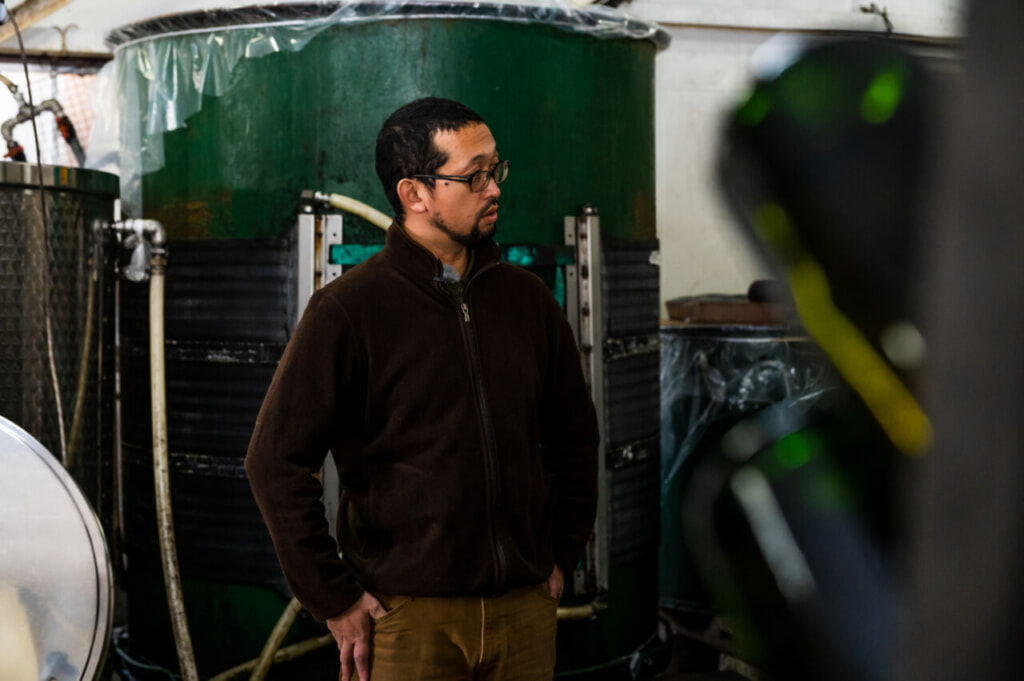
After becoming the representative of Sakai Winery in 2004, he began attending various study groups around 2007. He stopped using chemical insecticides that he had been using in his company and switched to pesticide-free cultivation. This was done in order to create a flow where the grapes live in the land without overworking and become wine without overworking. As a part of this, they have further introduced sheep.
The sheep’s role is weeding and composting. Because machinery is not allowed in the company’s vineyards on steep slopes, sheep, which feed on grass and squeezed grape residue, take on the role of weeding. In addition, the compost from the sheep compensates for the problem of the hilly terrain where melting snow washes away the nutrients in the soil.
The feces emitted by sheep that eat weeds and grape pomace from the winery nourishes the vineyards and allows the grapes to grow. It is truly a small ecological cycle that smoothly links the vineyard and winery.
Commitment to Unfiltered
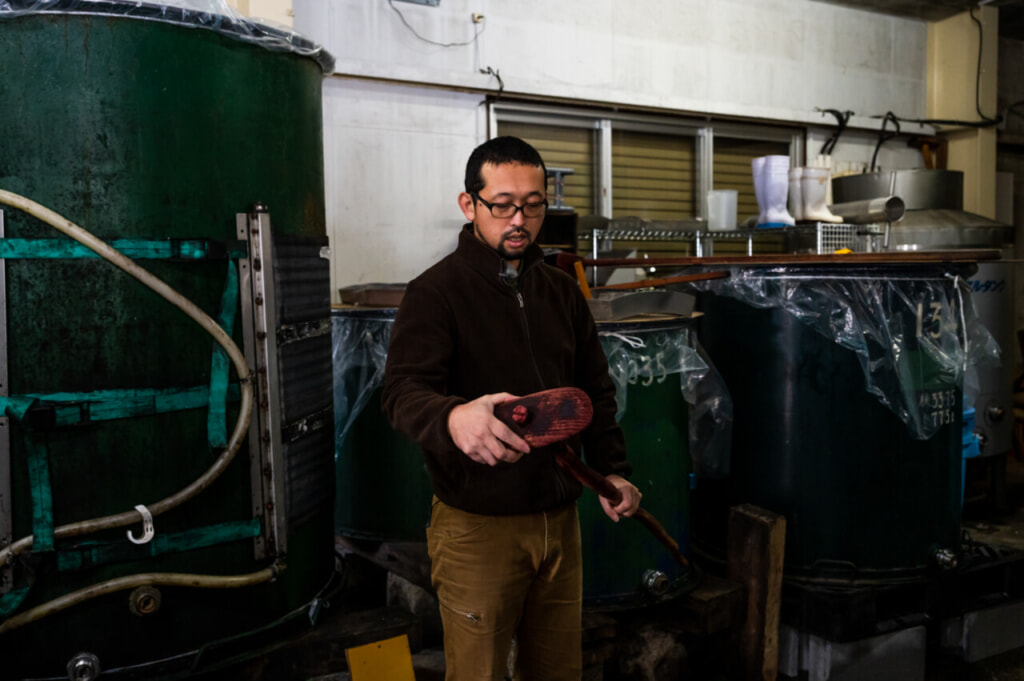
In addition to sheep, there is something else that Sakai Winery is committed to. That is that they continue to use traditional methods of production that are rooted in the land.
Take, for example, the tools. The “Kai-ire-bo” (a bar to put in the wine) and wooden barrels made from chestnut trees in Akayu are still used as they were in the old days. By continuing to use them, the brewery’s own yeast is attached to them, giving the wine a unique character. The enamel tanks have also been in use for about 70 years, as they add depth to the wine’s flavor.
The non-filter method has been used since the establishment of the company. Instead of using filtering equipment, they wait for the wine’s lees to settle naturally in the tanks, then scoop out the supernatant and wait for it to settle further. This process is repeated, and finally the wine is aged with the lees in a sake bottle. The reason for using sake bottles is that “the bottom area of a sake bottle is larger than that of a tank, making it easier for the lees to come into contact with the wine. This is a very time-consuming process, but the lees is the yeast that has finished fermenting, and the flavor created by the lees is the same as that of the wine. The flavor created by the lees gives the wine a local character, so Sakai Winery has continued to use this method for a long time.
In addition, since about three years ago, they have been vinifying their wines completely with wild yeast. Wild yeast is a natural yeast found on grape skins. In other words, it is a yeast rooted in the land. Since there was no dried yeast available from the postwar period until Mr. Sakai’s father’s predecessor, they inevitably used wild yeast to make wine, but when Mr. Sakai took over, they used the dried yeast that had become popular around the world. However, more than 10 years ago, around the same time that they switched to pesticide-free cultivation, they started working on reverting back to wild yeast again. Today, they vinify using only wild yeast, which can be said to be the starting point of winemaking.
The latest technology is of course superior, but it is not enough to create individuality. The methods that were left to nature in the past can now be reproduced with modern technology, and by using these methods, the culture and individuality unique to Akayu can now be reflected in the wine, in a good sense.
Brands with the charm of Akayu
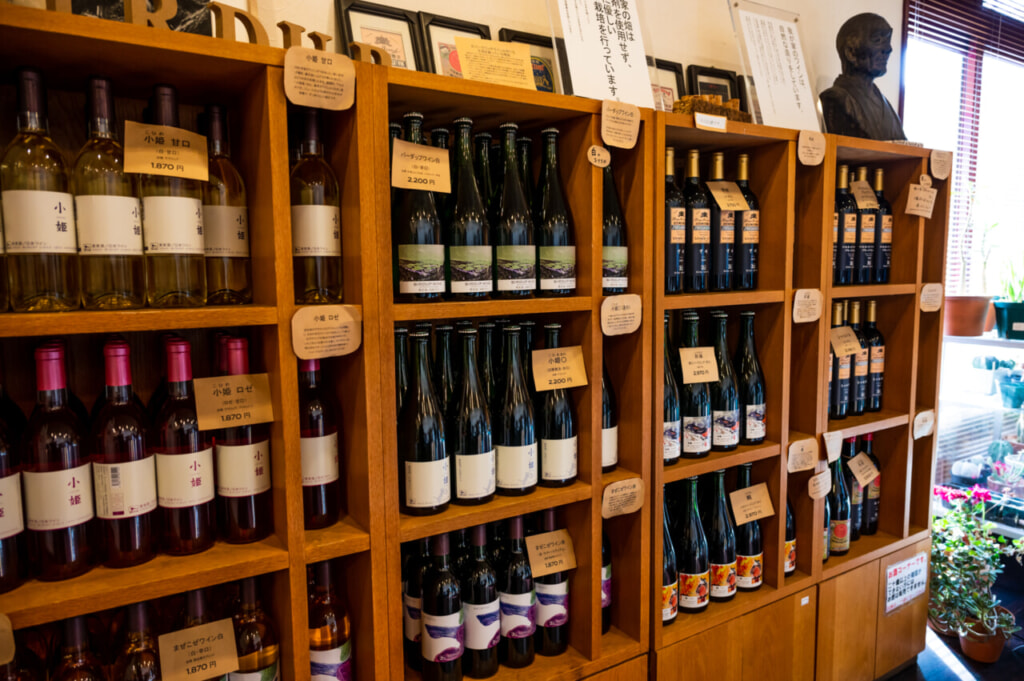
Sakai Winery, which grows a variety of grape varieties, also produces a wide range of wines. The names of the wines are also interesting. BIRD UP” is an English translation of the name of the area where the winery’s founder, Yaso Sakai, planted grapes, “Toriajizaka”. The name “Amedanuki” comes from the fact that the grapes are grown in the winery’s own vineyards in “Uruizawa” and “Mujinazawa. The name of the land was chosen in order to identify the characteristics of the wine, which is made from grapes grown in the vineyards.
Among the many brands available, Sakai recommends “Kohime” as the first bottle. The cute name is the name of the Delaware grape used by local farmers. In the past, wine made from Delaware became so popular that farmers became wealthy, so they gave it the name “Princess” and became familiar with it.
In addition to its name, “Mazekoze Wine” is also unique in its production method. This wine is aged in barrels without controlling the variety or year of harvest. Since the percentage of each grape variety is not known, the aroma of the land is said to be stronger.
In addition, the company has also taken on the challenge of producing orange wine, which has been gaining recognition in recent years as the fourth category following red, white, and rosé wines. Delaware, which is easy to find and suitable for the Japanese palate, but has only been used for sweet wines in Yamagata for over 100 years, was used to create a dry wine. Mr. Sakai says that he feels that orange wine, which is made by using red wine production methods to make white wine, has an appeal that has not been brought out in white wine up to now, and has the potential to evolve in the future.
Aiming for an unshakable presence
The Sakai family has been engaged in wine production in Akayu for over 100 years. Their goal for the future is to become an unshakable presence.
They cling to the land where they live, and make wine with the help of grapes while taking advantage of the vineyards and the surrounding environment. Mr. Sakai believes that since it is meaningful to continue on this land, there is no point in comparing ourselves with others. In fact, Sakai Winery, which has been in business for over a hundred years, even survived the World War. As such, he wants to be a winery that is not affected by outside influences.
Mr. Sakai feels that he has finally reached the starting point. There are many things he needs to do and wants to do, such as addressing the new problem of climate change and raising animals in the vineyards that may have existed here for a long time, in addition to sheep. Despite these challenges, he says he already has the conviction that “this is Sakai Winery’s wine.
We cannot take our eyes off Sakai Winery, which continues to take on new challenges while preserving the traditional methods of production.



